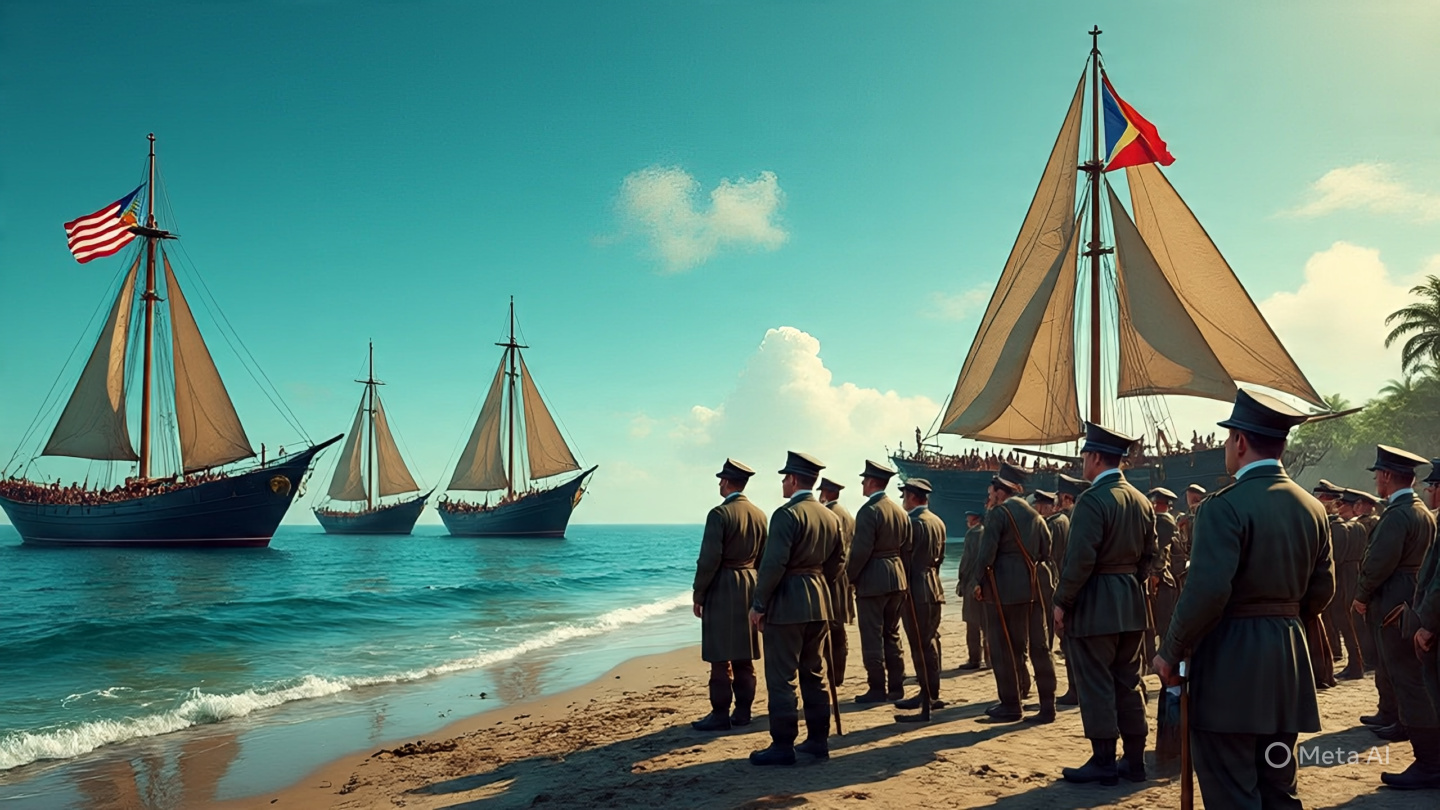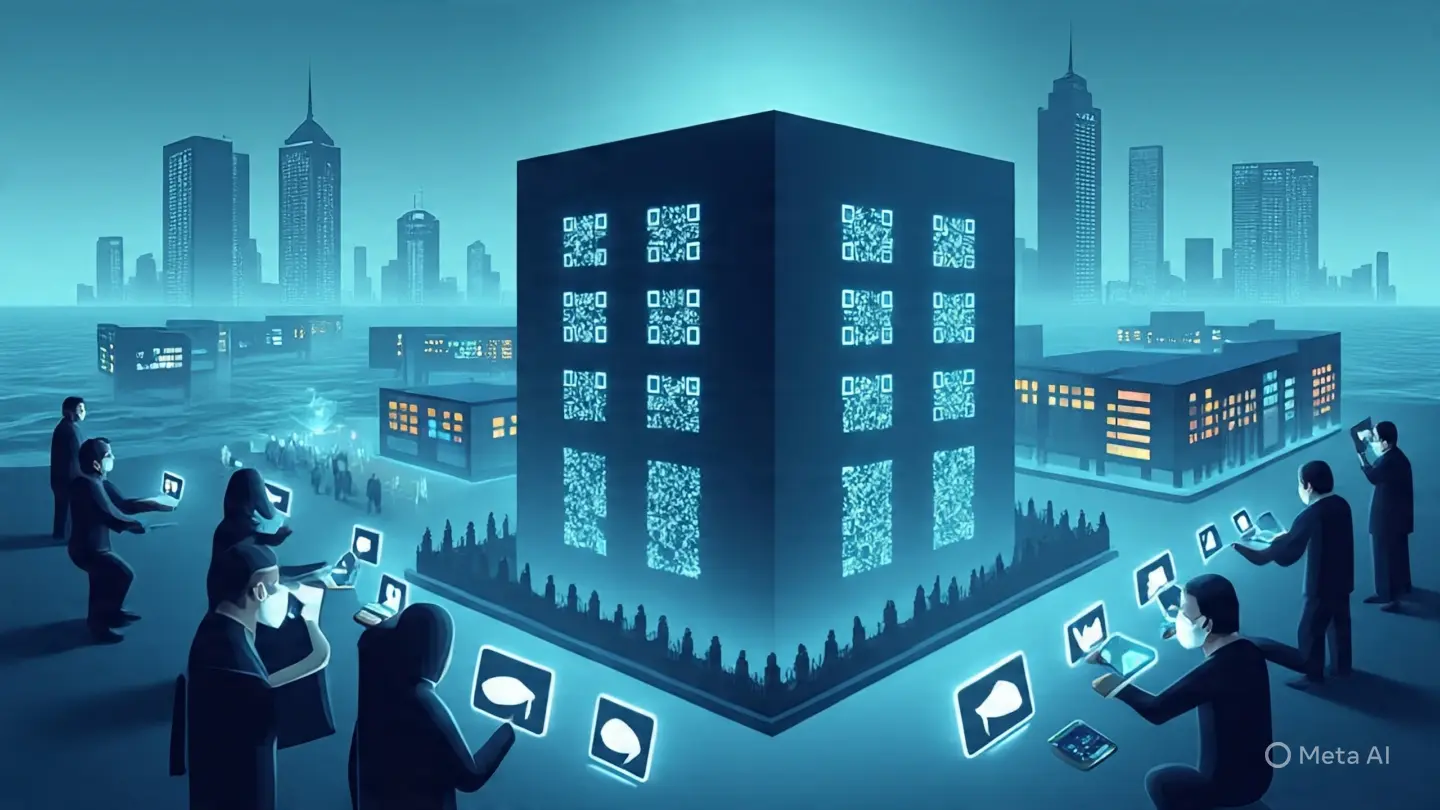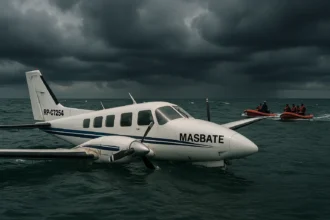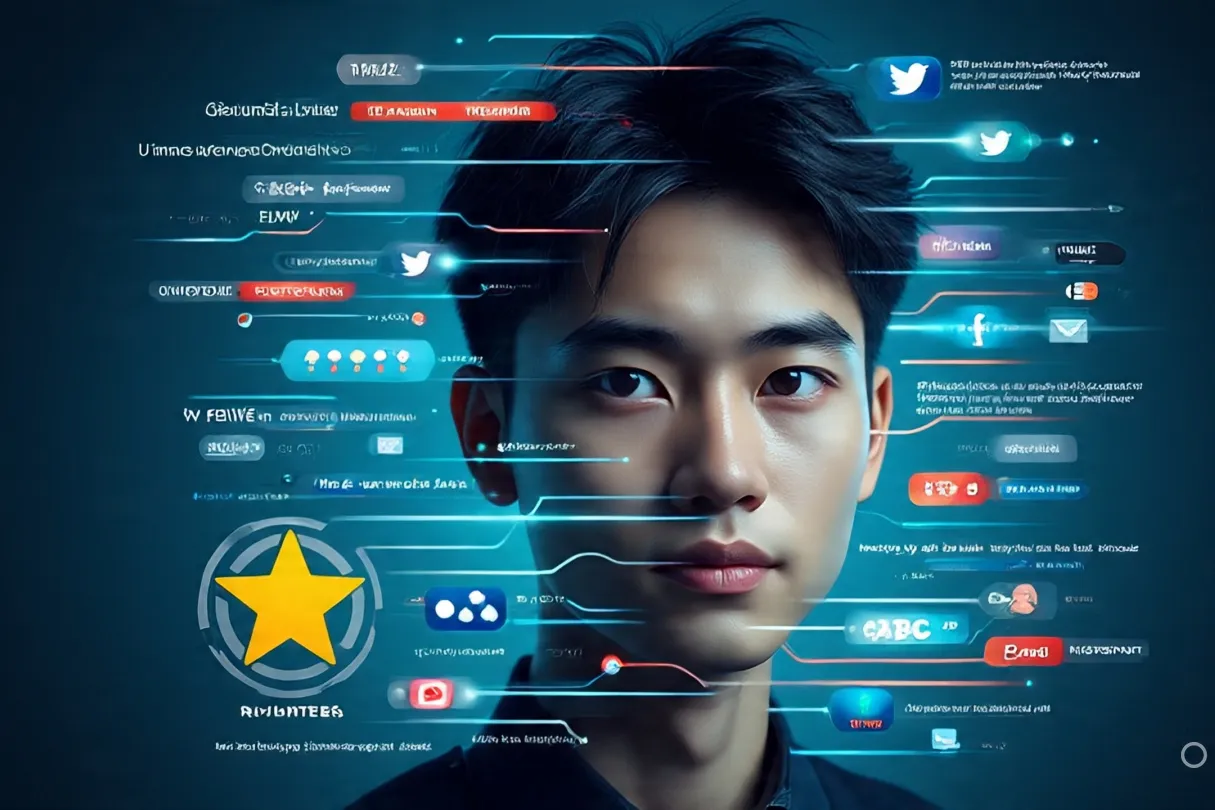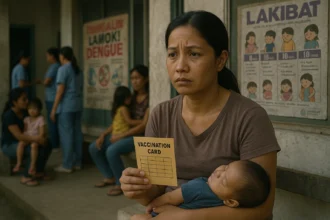7,000 Islands, 30,000 Years of Civilization 🌴⛵
Before it was colonized, the Philippines was home to rich cultures, established trade routes, and vibrant spiritual traditions. People had lived on these islands for over 30,000 years, developing religion, identity, and cooperation across an island cluster that looked like paradise.
- 7,000 Islands, 30,000 Years of Civilization 🌴⛵
- Empire vs. Community 🏛️🤝
- A Tale Too Uncomfortable for Textbooks 📚❌
- Spain’s Decline and the Rise of U.S. Imperialism 🏴
- The Great American Betrayal in Manila 🎭💣
- From Liberators to Colonizers ⚔️🧼🧍♂️
- The Supreme Court Says: They’re Ours, But Not Americans 🏛️📉
- Forgotten Until Bombs Fell ☁️🌍💥
- Echoes of Empire Today 🗳️⚖️📦
These weren’t isolated tribes—they were a civilization. And by the time Westerners took interest, the islands had been organizing into a state known as Ma’I, a name preserved in ancient Chinese records.
While this region advanced through trade and cultural fusion, Europe developed with a different mindset: conquest. That difference would shape centuries of trauma.
Empire vs. Community 🏛️🤝
Where local Filipinos built identity through collaboration, the European powers thrived on domination. And with the rise of Spain, a new force arrived with a religion that spread by stomping out others. Spain conquered the Philippines and renamed the islands after their monarch, King Philip.
But this story isn’t just about Spain. It’s also about how a country that claimed to value freedom—America—became an empire itself.
A Tale Too Uncomfortable for Textbooks 📚❌
America’s story of revolution and independence clashes with its own actions in the Philippines. After fighting off Britain, the U.S. soon became a colonial power, holding territories whose people had no voting rights and fewer protections.
Even today, millions of Americans in island territories have limited representation. Their stories remain largely erased from mainstream narratives.
Spain’s Decline and the Rise of U.S. Imperialism 🏴
By the late 1800s, Spain’s empire was in decline. One colony in particular—Cuba—was in open revolt. The U.S. wasn’t eager for war, but then an American ship mysteriously exploded in Havana. Newspapers blamed Spain. Teddy Roosevelt, then Assistant Secretary of the Navy, seized the moment.
He didn’t wait for presidential approval. He ordered U.S. forces to attack Spanish colonies across the world, including the Philippines. Admiral George Dewey sailed into Manila with orders to engage.
The Great American Betrayal in Manila 🎭💣
When the U.S. arrived, Filipinos had already been fighting for their freedom. They welcomed U.S. assistance, thinking they had a common enemy. But the Americans had other plans.
Spanish and U.S. commanders met in secret to stage a fake battle in Manila. The Spanish agreed to surrender—not to the Filipinos, but to the Americans. Filipino fighters were kept out of the city entirely, robbing them of recognition.
In exchange, the U.S. paid Spain $20 million and claimed sovereignty over the Philippines. Liberation had been a lie.
From Liberators to Colonizers ⚔️🧼🧍♂️
Back home, the U.S. had to spin this occupation. They staged military parades. They put George Dewey’s face on soap ads, calling it “the white man’s burden.” The message: colonization was about uplifting “uncivilized” people.
But on the ground, Filipinos fought back. A bloody war followed. The Philippine-American War left hundreds of thousands dead—many civilians. U.S. forces committed atrocities. And yet, this chapter is rarely taught in American schools.
The Supreme Court Says: They’re Ours, But Not Americans 🏛️📉
After the war, legal chaos followed. If the U.S. owned the Philippines, were Filipinos American citizens? Did they have rights?
In a series of Supreme Court cases known as the Insular Cases, the Court invented a new legal category: unincorporated territories. These lands were “part of” the U.S., but not fully. People born there had no vote, no constitutional protections, and no guarantee of representation.
The message was clear: the U.S. could rule lands and people, but exclude them from democracy.
Forgotten Until Bombs Fell ☁️🌍💥
By World War II, the Philippines was still under U.S. control. But it had faded from public attention. When Japan attacked Pearl Harbor in 1941, it also bombed Guam and the Philippines.
In FDR’s original speech draft, Manila was mentioned. But he crossed it out. Even in wartime, the Philippines remained invisible in the American narrative.
It wasn’t until 1946 that the Philippines finally gained independence.
Echoes of Empire Today 🗳️⚖️📦
The legacy of these events lingers. Puerto Rico, Guam, and other U.S. territories still operate under the legal shadow of the Insular Cases. Millions live under American rule but can’t vote for president or have meaningful representation in Congress.
When disasters strike—like Hurricane Maria in Puerto Rico—responses are slower and weaker. That’s not a coincidence. It’s systemic. It’s colonial.
This is the story of how the U.S. stole the Philippines. It’s about deception, hypocrisy, and empire. And it’s not ancient history. It’s happening right now.
